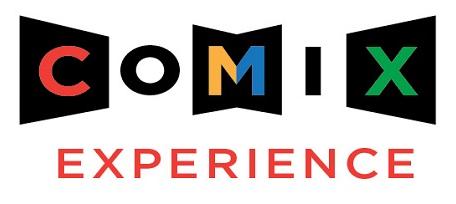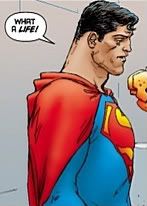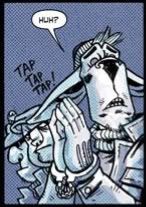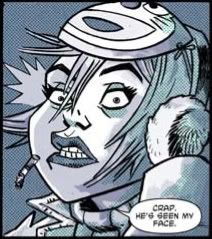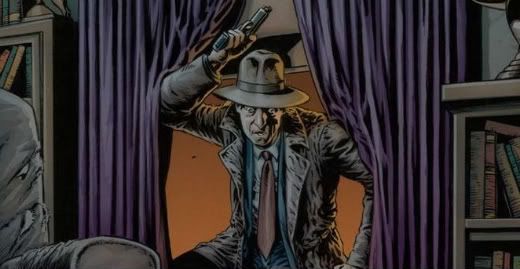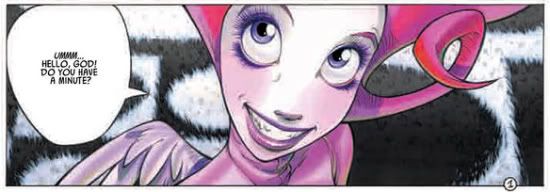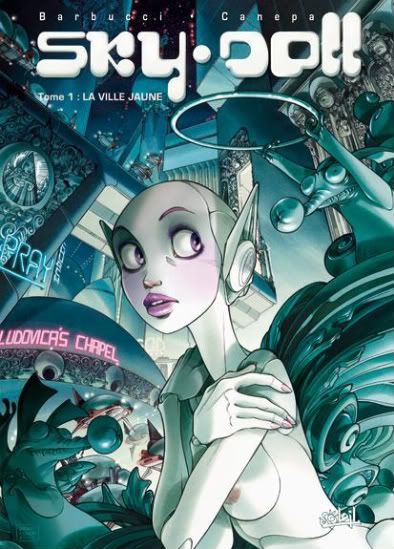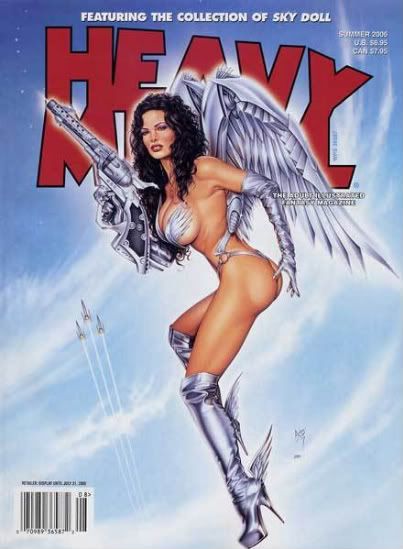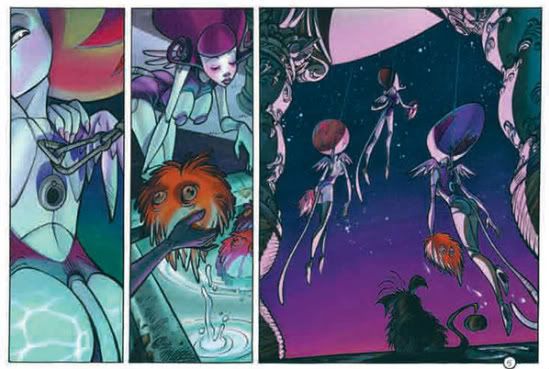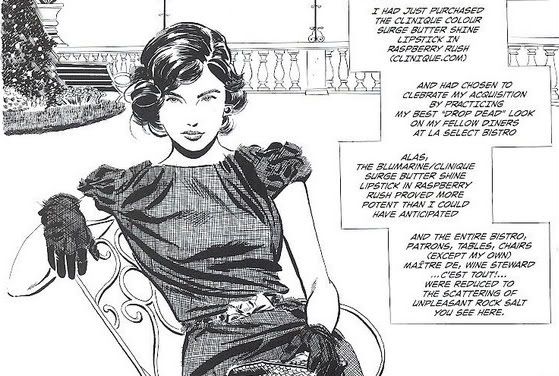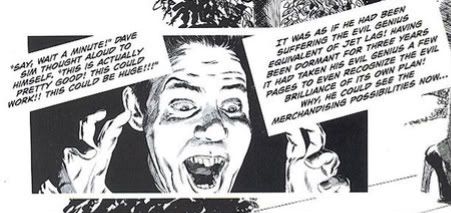 This is part two of an irregular multiple part series of essays looking at the first 25 issues of the BLUE BEETLE comic book series, recently published by DC Comics. Part One-- a statement of intentions and a look at the first issue of the series-- can be found HERE.
This installment will look at BLUE BEETLE issues #2-6.
This is part two of an irregular multiple part series of essays looking at the first 25 issues of the BLUE BEETLE comic book series, recently published by DC Comics. Part One-- a statement of intentions and a look at the first issue of the series-- can be found HERE.
This installment will look at BLUE BEETLE issues #2-6.
I.
The first full storyline of the comic is about Blue Beetle's confrontation with his first set of antagonists. Blue Beetle's "secret identity" is a Mexican-American teenager. So... the first challenge he has to face? A street gang. Named the Posse.
Race is a motherfucker. It’s a tough issue to deal with in any capacity, and I appreciate that the writers are on a tightrope—put in the street gang and you get the “oh, why must we see the street gang” crowd; leave out the street gang and you get the “why’d you white-wash the Mexican-American hero”; have him get a B in Spanish and you get Cheech & Chong fans excited but everyone else gets confused. That damned-if-you- do bind is a reason I think other creators might want to shy away from writing those characters—but also a reason they shouldn’t.
The Posse, though? The same name as the Jamaican bad guys from the Steven Segal epic, MARKED FOR DEATH?
 Unfortunately, unlike MARKED FOR DEATH’s Posse, BLUE BEETLE’s Posse are neither Jamaican nor super wicked awesome-est street gang ever; they kind of suck. Luckily, they aren’t featured in the comic very much beyond this arc.
Unfortunately, unlike MARKED FOR DEATH’s Posse, BLUE BEETLE’s Posse are neither Jamaican nor super wicked awesome-est street gang ever; they kind of suck. Luckily, they aren’t featured in the comic very much beyond this arc.
Per the classic shonen fight-comic formula, as the arc progresses, Blue Beetle ultimately teams up with the Posse (who in these issues suddenly include his best friend) to face off against a greater threat—the lady crime boss, La Dama! (Who he will later team up with to face the greater threat of so-and-so, and so-on, as the formula dictates). So although the Posse are the bad guys of issue #2, by issue #6, they’ve become the good guys.
Which… is kind of weird. Because fun-fact about the Posse:
 They’re engaged in narco-trafficking.
They’re engaged in narco-trafficking.
About 400 tons of cocaine enter into the United States every year. That’s not counting the tons of heroin, meth, etc. So… you know, statistically speaking, if Blue Beetle’s friend ever looked in the back of a truck, chances are he’d discover a big mountain of ye’ old yayo. But on the bright-side, maybe it’s sex slaves—- 15 year old child-brides for our professional ballplayers, if that’s the sort of thing that makes you feel better. Or guns intended for child-soldiers. Or a dirty bomb.
Statistically, though—come on, read between the lines: he’s engaged in narco-trafficking.
The first issue has the main character not caring if one of his friends being physically if not sexually abused by her father— now in issue #5, we have the main character not caring that his best friend is engaged in narco-trafficking. Thank god the space aliens show up in a few issues and change the trajectory of this comic—otherwise, it was really just a matter of time before Blue Beetle’s dad would’ve had a couple baby skulls mounted on his cock, and Blue Beetle would be holding pom poms and cheering him on, and that’d be the cover. “This issue, Blue Beetle’s polygamous first cousin makes a flesh necklace from the ears of his many Vietnamese war-brides, while Blue Beetle eats a delicious French Apple pie.”
There will be readers who’ll insist that the trucks might be carrying pixie dust or robot apes, since this is the DCU and the DCU is built on top of a frothy cake of whimsy and bullshit. Their argument would go: “because the DCU is built on top of a frothy cake of whimsy and bullshit, we can suspend our disbelief and believe it’s possible that a street gang involved in illegal smuggling operating out of EL PASO, TEXAS, is smuggling something that is illegal but does not offend our sense of right and wrong the way smuggling drugs, guns or people might.”
Fine, fine, eat your cake. But the comic still has a street gang in it. And is specifically stating that they financially support themselves by operating in an extra-legal way. And those characters are the positive characters. The negative characters? La Dama’s big crime in the arc is taking a baby away from… a street gang whose engaged in operating in illegal behavior.
Uh, that exists outside the DCU: it’s called Child Protective Services.
II.
La Dama is taking super-powered children from out of the barrio or away from the street gangs, and is keeping them in a safe, structured environment in which they’re provided with an education. The arc ends on a bizarre note where the characters who had been “kidnapped” are urged by the head of a street gang to return to the barrios. They’re urged to abandon the safety of Child Protective Services and to return to the bosom of the societal institutions provided by extra-legal street gangs.
 You don’t need white institutions to protect you because now the Mexican-Americans have their own superhero! Gangs ahoy! At least Blue Beetle looks embarrassed by all this, I guess, but it’s hard to tell if that’s the character reacting to the speech, or the artist reacting to the writing.
You don’t need white institutions to protect you because now the Mexican-Americans have their own superhero! Gangs ahoy! At least Blue Beetle looks embarrassed by all this, I guess, but it’s hard to tell if that’s the character reacting to the speech, or the artist reacting to the writing.
I think we can all agree at least that La Dama is in the wrong for having been engaged in kidnapping children from their parents in order to raise an army of magical Latinos in the hopes of someday conquering the world. But the rest? Well, at the risk of repeating myself: race is a motherfucker. Sometimes things sound different ways to different people. The arc was perfectly fine to most people who read it. Perhaps most people read the “safety versus freedom” aspects as a commentary on the civil rights situation in this country following this country’s botched response to 9/11. And not the way I read it which is, you know: “minorities should avoid the social support or interference of white institutions in favor of their own institutions—no matter how criminal or decrepit or involved in the narco-trafficking business-- even if it means their friends get beaten by their dads.”
I’m sure fans could angrily argue that the bad guys can’t be a metaphor for white institutions because La Dama is a minority character herself, but—- well, I wouldn’t find that a very convincing argument, and they would, and there’s the impasse. But say a fan argues that “La Dama is the bad guy and she’s a minority, so everything you just said is wrong.” Here’s the thing I don’t get then: Blue Beetle only defeats this threat by exposing La Dama’s wrongdoing to … a higher authority, specifically a cameo from The Phantom Stranger:
 So even if you set aside everything else, in the first arc, the minority heroes haven’t really changed anything, but have only created the conditions necessary for a magical White Guy to step in and rescue the minorities from themselves. The arc says a Magical White Guy is the necessary solution to keep the evil minorities and the good minorities in a proper bargaining relationship. If bad minorities act out, the good super-minorities rat them out to the Magical White Man.
Uhm, yeah: no.
So even if you set aside everything else, in the first arc, the minority heroes haven’t really changed anything, but have only created the conditions necessary for a magical White Guy to step in and rescue the minorities from themselves. The arc says a Magical White Guy is the necessary solution to keep the evil minorities and the good minorities in a proper bargaining relationship. If bad minorities act out, the good super-minorities rat them out to the Magical White Man.
Uhm, yeah: no.
But look, we all have our different perspectives, and hey, that plus refracted light is what makes us a rainbow.
III.
The 2nd issue continued to have a “future storyline” taking place after the previously published Infinite Crisis miniseries, along with a “past storyline” taking place before or contemporaneously with said miniseries.
 At the end of issue 2, the series adds in the "twist" that the "future" storyline (and the rest of the series) takes place exactly one year after the crucial events of the "past" storyline. Why? Because it's DC and that means... EDITORIAL FIAT! Yay!
At the end of issue 2, the series adds in the "twist" that the "future" storyline (and the rest of the series) takes place exactly one year after the crucial events of the "past" storyline. Why? Because it's DC and that means... EDITORIAL FIAT! Yay!
At or about the publication of the second issue of BLUE BEETLE, DC's latest EDITORIAL FIAT! du jour was "all of our books take place one year later than the last moments of INFINITE CRISIS." So, BLUE BEETLE, like the rest of the DC line (I guess…?), jammed in a “one year later” subplot.
One Year Later? Really? Even if it's a new book, launching a new character, that doesn't need any added confusion? EDITORIAL FIAT! Even if it damages the compact between a reader and a book that a comic is a window into another world with its own people and geography and rules, by reminding us of the bizarre, haphazard creative forces that go into that world's creation? EDITORIAL FIAT! Even if it damages the relationship between a reader and a creative team by reminding the reader that the creative team includes a bunch of fucking editors? EDITORIAL FIAT! Even if Kyle Mclachlan reached into a kangaroo pouch and pulled out a severed ear, and the kangaroo punched him in the skull, and the ear was on fire, and the kangaroo was on fire, and our loins were on fire, and the whole world was on fire? DRUGS!

Earmuffs, Blue Beetle! Earmuffs!
IV.
The arc isn’t very meaningful long-term. I don’t know if that matters. The Posse plays hardly any role in the rest of the series— red herring.
Blue Beetle’s goal is to meet one particular member of the Posse so she can explain his powers to him. She never does or explains anything of any value, and is never seen again— red herring.
The arc sets up an archnemesis for Blue Beetle, La Dama, who doesn’t really ever do anything I remember being especially evil for the rest of the series— red herring.
The arc sets up a third nemesis for Blue Beetle, a magician henchman for La Dama who never really ends up mattering very much— red herring.
The entire arc is about magic in the DC Universe, and Blue Beetle learning about magic, and coping with magic. The rest of the comic is a space opera sci-fi adventure— red herring.
 The most interesting bit is the series sets up a dilemma: should Blue Beetle save his friend from her evil Aunt and save himself the hassle of having his secret identity exposed, or should he allow her to be raised by a crime-lord for his own convenience?
The most interesting bit is the series sets up a dilemma: should Blue Beetle save his friend from her evil Aunt and save himself the hassle of having his secret identity exposed, or should he allow her to be raised by a crime-lord for his own convenience?
Guess which option he chooses. Also: who ultimately resolves the moral dilemma? Not Blue Beetle— it’s resolved for him by external events. So, I’d personally categorize that under “herring, red.”
V.
Something this arc got me thinking about is Blue Beetle’s relationship with his power.
The Marvel characters-- the nature of power is split for a Marvel character. You either achieve your powers (e.g. Tony Stark builds his Iron Man suit) or you’re victimized by them (e.g. whoops: Hulk). Power in a Marvel comic is not something to be merely enjoyed ala a DC character like The Flash or Superman— there’s more to it than that.
Captain America? Victim: a man out of time. Iron Fist? Achievement: learned kung-fu. Spider-man? Both: achievement-- built his webshooters, but also victimized by how his powers force him to be responsible. The X-Men? Victims. Daredevil? Uh: handi-capable. The Fantastic Four? Both victims and achievement-based heroes! And so on. The Marvel characters … there’s a certain fission element built into their DNA. Their relationships with power defines a lot about how or why those characters work.
The big DC characters are not as interesting in that respect. Sure, there’s Batman (both victim and achievement), but more of them were just sort-of handed their powers. Green Lantern is literally just handed a power ring—end of story.
How about our boy? How about Mr. Beetle? In the first issue, he learned that he had superpowers, and after that—he just goes off and uses them.
In this arc, he’s never really victimized by his powers— he’s more than happy to use them willy-nilly. No, he’s victimized by the unhappy situation of being a part of the DCU. He’s victimized because he was taken away from his family for a year due to the One Year Later stunt event-— that has nothing to do with his powers. He’s victimized by DC editors, which… get in line.
He certainly didn’t achieve his powers-- a magical rock crawled up his ass. He was sodomized with superpowers— wee. The only achievement was on the part of his sphincter.
Anytime I watch a James Bond movie, I want to know how to play Baccarat (it's an absolutely retarded card game). James Bond is all about achievement. James Bond fans want to dress like Bond dresses; smell like he smells.
Who’d want to smell like the Blue Beetle? Or his sphincter?
Not me, sister.
Not me.
![]() So there's two ways to look at FINAL CRISIS #1.
So there's two ways to look at FINAL CRISIS #1.